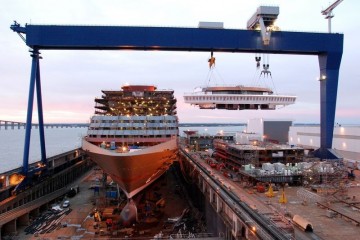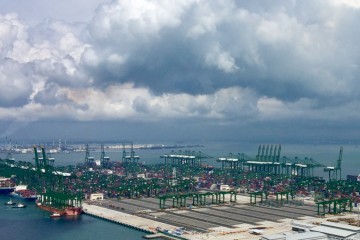Two key documents on maritime transport in Europe in two weeks; and one question that emerges: does the EU know what it is doing, or is it just clueless?
The first report is by the European Court of Auditors. Its title reads “In troubled waters“, a thinly concealed hint at the nature of recent EU container port investment. Missing the boat, would have been another apt summary: too little cargo for too many ports. Add to this the increased ship size and the more intense cooperation via alliances and the picture is complete: super-leverage of carriers vis-à-vis ports. The report is full of examples of ports that are completely empty after carriers shifted from one port to another.
The second report is the implementation report of the EU Maritime Strategy 2009-2018. It depicts a reality completely at odds with the report of the Court of Auditors. In essence, it describes the steady progress in supporting the shipping sector, without referring to any “troubled waters”. EU taxpayers money is spent to a sector – shipping – that gets all the freedom to play out one EU-funded port against the other. Either the Commission is not aware of it, or it is untroubled by it. None of these options is very uplifting.
How could these two reports be used to define a coherent EU policy for the maritime supply chain? Three suggestions.
1. Formulate an aspirational vision
Shipping is not a precious piece of jewellery, a ring that you polish to show off at a posh dinner party. Shipping is a tool to facilitate trade: to make it easier for firms to export and import. There is nothing fundamentally wrong with strengthening maritime supply chains, as long as this strengthens sectors that Europe considers strategic. For example, if Europe wants to sustain its own energy provision, off-shore shipping might be a priority.
So, the central question is: why does the EU want to ship, what does it want to ship and how does it want to ship? Simply supporting an industry that does what it always did, is not a strategy.
2. Overcome internal contradictions
The EU is used to bridging different strategic orientations. For some the essence of the EU is the single market; for others it is supranational regulation. These orientations can go hand in hand, for example when harmonised regulations are needed to create more free market, but they can also be in conflict. As is the case for the maritime supply chain: EU ports policy is about competition, its shipping policy about competitiveness. Two words that resemble each other, but that mean something fundamentally different, leading to concentration in shipping but fragmentation in the ports sector. Put differently: the situation that the European Court of Auditors deplores is not an accident or a question of bad implementation, but the logical result of EU’s maritime policy: a wilfully created port bubble that benefits an increasingly selective group of ship owners.
3. Focus on the real issues
This sounds self-evident, but reality is different. The recent discussion on the port package is an illustration in case: all this energy and effort to create a bit more competition in towage services; was that really worth the political capital?
In the mean time, the world moved on and bigger issues have come up: how to relate to bigger ships and bigger powers for example.
Bigger ships: they have an impact that is ambiguous at best. Yet, the EU has been remarkably agnostic about it. For some EU representatives it was simply impressive. China has expressed its concerns on ship size and discussed its conditions with Maersk. Has EU ever engaged in similar discussions or talked with China on a common approach? Increased ship size kind of logically leads to consolidation of terminals and cooperation of ports, so rather the inverse of the EU recipe of competition.
Bigger powers, in particular China. The implementation document of the EU maritime strategy mentions the cooperation with China as a best practice. But the asymmetry in the relation is strikingly clear. It is China that has defined what are the crucial entry points into Europe, bought up some of its main ports and it gets Europe to pay for connecting the ports they bought to European hinterlands. Europe is ambiguous about what are the main ports for Europe, let alone that it would dare to present its own New Silk Road or main gateway ports into China. European terminal operators do not have one single majority share in any Chinese port and European carriers cannot engage in cabotage in the Chinese market. If this is a best practice of European diplomacy, curious to know how bad practice looks like.
How to achieve this?
Just some ideas. Start to talk about the maritime supply chain; this includes not only shipping, but also shippers, ports, terminals, cities and the whole hinterland transport chain. If 2018 is going to be EU’s maritime year, make sure we talk about the whole maritime supply chain, not just about how great shipping is. Start to think about the needs of European industry, and formulate a policy that is in line with this, rather than imposing a network knitted together in political backrooms to satisfy local fiefdoms. Formulate an ambition that could drive the maritime strategy from 2018 onwards and that is aspirational. Something like: make the European maritime supply chain the smoothest, greenest, most cost-efficient, client-oriented and innovative in the world. And act on it.
1 Comments
Comments are closed.




“So, the central question is: why does the EU want to ship, what does it want to ship and how does it want to ship? Simply supporting an industry that does what it always did, is not a strategy”
Well said.